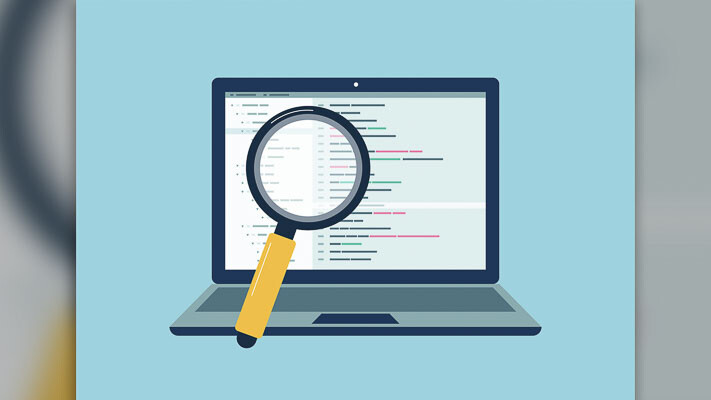
Jason Mercier of the Washington Policy Center offers a thank you to Sen. Lynda Wilson and Sen. Christine Rolfes for introducing SB 5158 to help advance this tax transparency reform
Jason Mercier
Washington Policy Center
How much do you pay in taxes and which level of government imposes that tax burden? A new bipartisan bill introduced by the chair and ranking member of the Senate Ways & Means Committee would help answer that question by creating a searchable database of state and local taxes. Here is the intent section for SB 5158 – Concerning transparency in state and local taxation:

“The intent of the legislature is to make state and local tax revenue as open, transparent, and publicly accessible as is feasible. Increasing the ease of public access to state and local tax information significantly contributes to governmental accountability, public participation, and open government; this is particularly true when the information is currently available from disparate government sources, but is difficult for the public to collect and efficiently aggregate.”
There are approximately 1,800 taxing districts in the state whose officials impose various taxes on Washingtonians. There is no single resource, however, to help individuals and businesses learn which taxing districts and rates they are subject to, and how much officials in each taxing district add to their total tax burden. A typical home, for example, can be located in as many as ten different taxing districts.
SB 5158 would build on the state’s searchable budget website (fiscal.wa.gov) to help provide Washingtonians with an important tax transparency resource. Fiscal.wa.gov was created by a bill unanimously adopted by lawmakers in 2008 based on WPC’s recommendation.
Among the provisions of SB 5158 is requiring the creation of an educational tax burden calculator. From Section 2 of the bill:
“The department must also provide tax rate calculators on the searchable database to allow taxpayers to calculate their potential taxes. Calculators must be provided at a minimum for property, sales and use, business and occupation, vehicle, and other business taxes and must be specific to the rate for the taxing district in which the taxpayer resides. The calculator may only be used for educational purposes and does not have a legal effect on taxes due.”
Here is what the Seattle PI and The Olympian said about this tax transparency concept when WPC first proposed it to lawmakers back in 2008:
Seattle Post-Intelligencer (8/17/08): “The Legislature and the governor recently moved the state into a new era of budget transparency with a law creating a searchable Web site detailing state spending. The state should advance its impressive digital empowerment of the public by giving everyone access to the same type of information about his or her state and local taxes. The Washington Policy Center last week unveiled a proposal to create ‘a tax transparency Web site’ allowing individuals and businesses to figure out just how much they are paying in all local and state taxes. The site would have information not just about state and city tax rates, for example, but also the entire range of rates from other taxing districts, such as school, county, library, fire, transit and other entities. There also would be a calculator allowing individuals to figure their own total state and local tax burdens . . . Like the spending idea, this plan ought to have bipartisan appeal. Whether one tends to think we have too few services or too many taxes, there is broad common ground on the value of accurate information for making good decisions.”
The Olympian (10/2/08): “State lawmakers are fond of talking about openness and transparency in government, but generally come up short when it comes to taking positive legislative action. This year was an exception when the House and Senate passed Senate Bill 6818, which requires the state to make available to the public detailed information about state spending. State officials have until Jan. 1, 2009, to assemble line-by-line state spending data and make it available to the public via a Web site. It’s a great step forward to a more open and transparent government. Now it’s time for lawmakers to shift their focus to the revenue side and give the public the same kind of detailed information about the taxes they pay to support government programs.”
Increasing the ease of public access to state and local tax rates would enhance trust in government and increase the public’s understanding of the cost of government services. Improved transparency would also facilitate meaningful tax competition among taxing districts because taxpayers could compare different tax burdens based on where they decide to live or locate their businesses.
By creating an online searchable database of all tax rates in the state for each taxing district as proposed by SB 5158, policymakers would make taxation more transparent and help citizens learn more about what government decisions mean to their pocketbooks, helping to remove the mystery surrounding taxation.
Thank you, Sen. Lynda Wilson and Sen. Christine Rolfes for introducing SB 5158 to help advance this tax transparency reform.
Jason Mercier is the director of the Center for Government Reform at the Washington Policy Center.
Also read:
- POLL: Why did voters reject all three tax proposals in the April 22 special election?Clark County voters rejected all three tax measures on the April 22 special election ballot, prompting questions about trust, affordability, and communication.
- Opinion: The war on parental rightsNancy Churchill argues that Olympia lawmakers are undermining voter-approved parental rights by rewriting key legislation and silencing dissent.
- Opinion: An Earth Day Lesson – Last year’s biggest environmental victories came from free marketsTodd Myers argues that Earth Day should highlight free-market solutions and grassroots innovation as more effective tools for environmental stewardship than top-down mandates.
- Opinion: Time to limit emergency clauses and give voters a choiceTodd Myers urges the governor to remove emergency clauses from bills that appear intended to block voter input rather than address real emergencies.
- Letter: C-TRAN Board improper meeting conductCamas resident Rick Vermeers criticizes the C-TRAN Board for misusing parliamentary procedure during a controversial vote on light rail.










